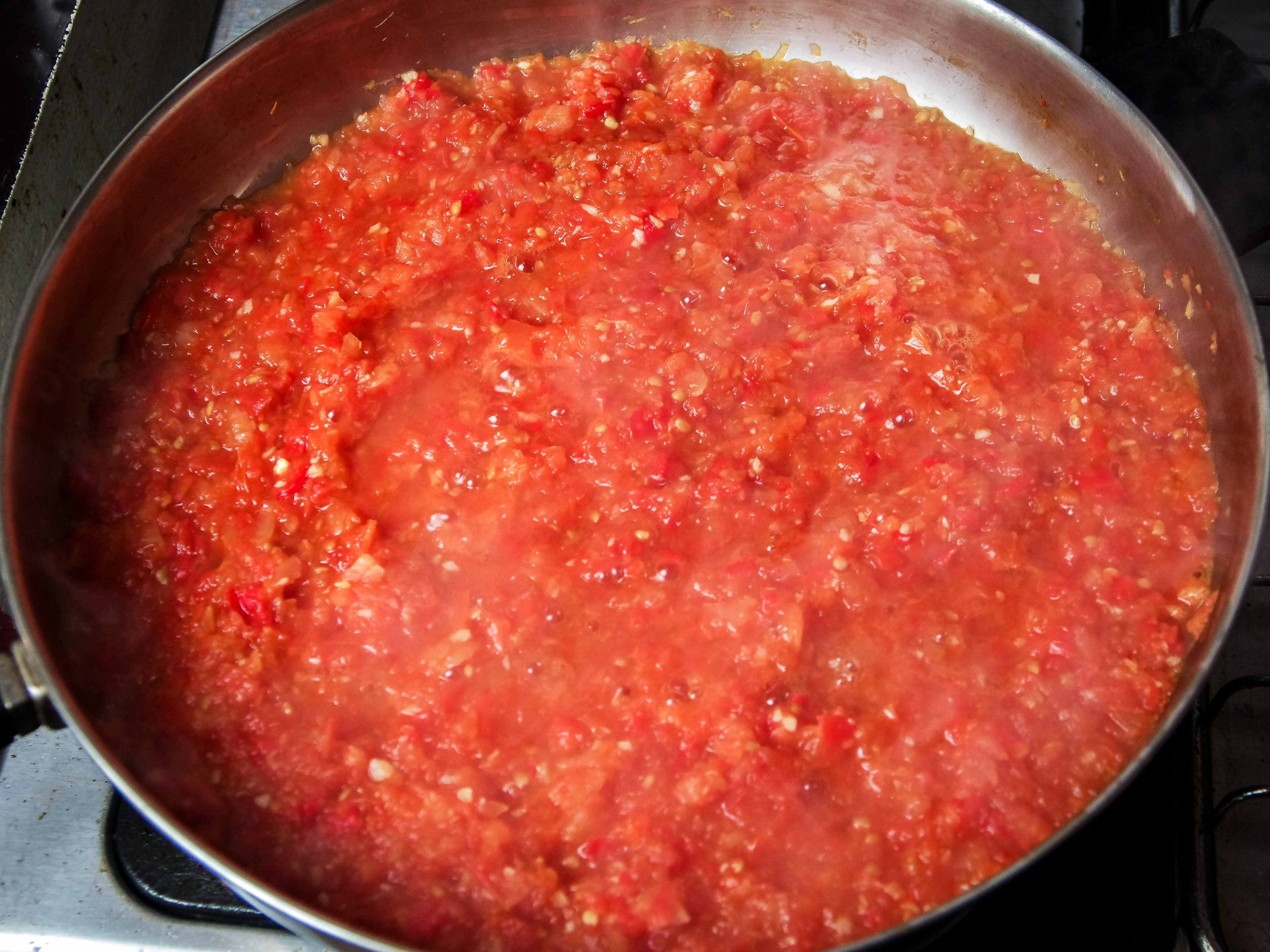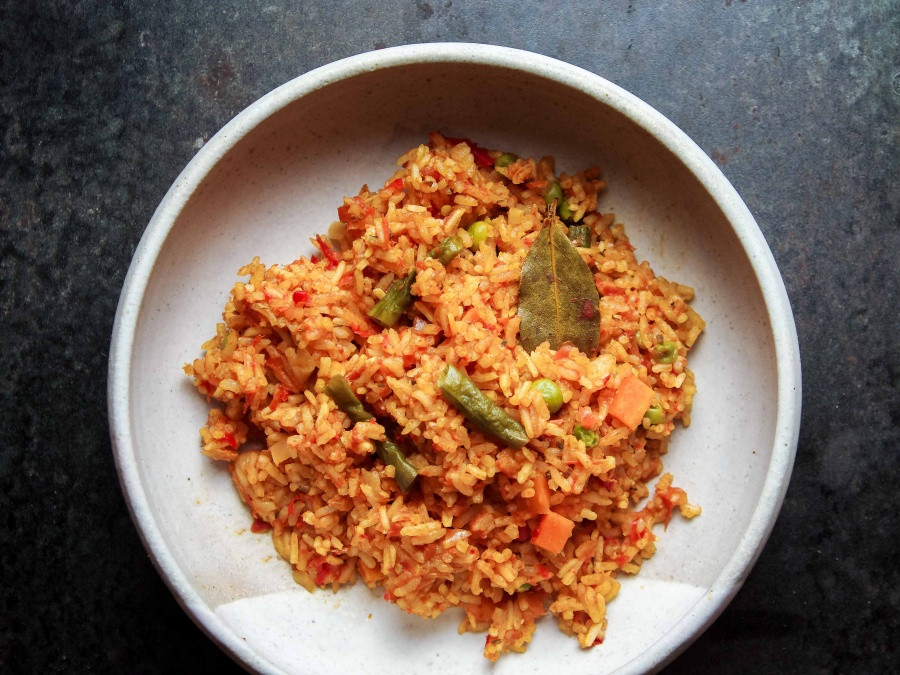Every jollof is more than just rice
by Al Ibrahim07 May 2021
In a world where Africa is thought of as a country, culinary specificity and representation matter in the vast, complex realm of Nigerian cuisine.
When people ask me what the most common Nigerian food is, the first thing that comes to mind is a version of that Carl Sagan quote: “If you wish to make an apple pie from scratch, you must first invent the universe.”
I would think, “If you wish to make Nigerian food, you must first define Nigeria.”
The place we call Nigeria is a country of 200 million people speaking some 500 languages. That’s a lot of tribes that look, talk, think, and eat differently.
The Southernmost part of the country opens into the Atlantic Ocean, which is how the Europeans came through. And the Northernmost part blends into the Sahara, which is how the Arabs got in. The official language is English, because that’s the only way to get the tribes to talk to each other, but most of us still prefer to just stay in our parts of the country, with our own people, speaking our own languages, eating our own foods.
But of course I don’t say all that.
“There’s no one food that’s universally Nigerian,” is what I would actually say. “But over in the Northeast—for example—it’s probably some version of tuwon shinkafa, served with miyan kuka.”
It’s a form of glutinous rice shaped into round balls, served with soup made from powdered baobab leaves.
But that characterisation isn’t entirely true either. Because my answer is more political than it is culinary. In a world where Africa is thought of as a country, it’s an answer that I feel compelled to give. People think of Nigeria as a state in the country of Africa, when in reality—in terms of language and cultural diversity—it’s more like the Eurozone.
But the truth is, South Asia has biryani. The Levant has hummus. And West-Africa has jollof rice. Almost every country in the region—from Ghana to Senegal to Mali—has its own version of the dish. And if there’s anything that holds Nigerians together— more than the flag, the Naira, and the English language— it’s a warm plate of jollof rice.
###
It’s essentially just three things: rice, tomato paste, and some sort of spice.
The Nigerian jollof is made with long grain parboiled rice. My sister—who I called to confirm some things for this article—insists on parboiling the rice first to remove as much starch as possible.
“If you don’t,” she cautioned, “The rice will stick together in the pot and won’t look as nice.”
Remember, Nigerian jollof rice must look nice.
For the tomato paste, you could—strictly speaking—just go with any tomato paste from a can. But we’re making Nigerian jollof here, not some ragtag Jollof from god-knows-where. Please. There’s class here.
As for curry, not only does every region in the country have its own version, I feel like every household has theirs. My aunt’s curry powder mix definitely tastes differently from my mom’s. And I know that whatever my brother— who lives in Cairo—uses is different from what I’m using here in Kuala Lumpur. But mostly, what you need is ginger, turmeric, and at least some sort of chilli.
Because jollof rice is a simple one-pot dish, all you need to do is put everything together in a rice-cooker, and let it do its thing. Here’s my recipe, for you.
And while your jollof rice is cooking, I’ll tell you a story.
###
A couple of years ago, I was in Greece for a work trip, and for the week or so that I was there, I had some of the most incredible food of my life. Greek food, all of a sudden, jumped to the top of my list of favourite cuisines in the world.
When I arrived in Barcelona the year after that, one of the first things I did was to find a Greek restaurant. Unfortunately, the food didn’t taste anything like my memory. The year after that, I was in London, and the Greek food there wasn’t quite it either. Every time I find myself in Europe, I make it a point to try Greek food, but I’m still yet to have dolmathakia as good as the ones I had in Mykonos.
Recently, I asked a colleague who’s from Greece why it’s so difficult to get good Greek food outside of Greece.
“Because Greek food is not just the ingredients and a method,” she said. “It’s also rooted in place, a climate, and a culture.”
The thing is, there’s nothing unique about Greek food in that regard. This applies to all food. I mean, there’s no reason why char kuey teow should taste better in Penang than in Singapore, and yet it does.
The reason jollof rice tastes differently in Ghana than it does in Nigeria is simple: Nigerian jollof is Nigerian, and Ghanaian jollof is Ghanaian. Different people, different palettes, different tastes.
###
Last year, a friend invited me and a few other friends for a Christmas dinner. And because I arrived early, my friend asked me to help her prepare a drink—some sort of classic European Christmas drink recipe she found on the internet.
When I make my own things, I don’t usually follow recipes to a T, but for that drink, because I was making it for someone else, I did everything by the book.
I cut the things the way the recipe told me to cut, and I boiled things exactly the way I was supposed to. I added things and mixed other things and when all was said and done, I called my friend over to have a taste.
“Does that taste right?” I asked.
“I don’t know,” she said. “I’ve never actually had this drink before.”
One of the guests was European, so we called him over and asked for his opinion.
“I think it tastes good,” he said.
“Yea, but does it taste how it’s supposed to taste?” I asked.
“I don’t know how it’s supposed to taste,” he said.
Perhaps this classic European Christmas drink isn’t from his part of Europe?
Anyway, go check on your rice. I hope your jollof tastes good.
To make Al’s jollof rice, see the recipe here.
***
Al Ibrahim is a tinker of culture, tailor of words, soldier of cinema, and an underrepresented Nigerian majority.
Read next
How my grandfather wooed his son-in-law—with peanut cake
A rare Foochow delicacy—made to impress

In defence of rice
The goodness of our staple grain

Jollof rice
Deeply flavourful tomato rice






